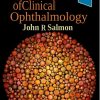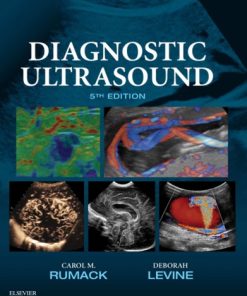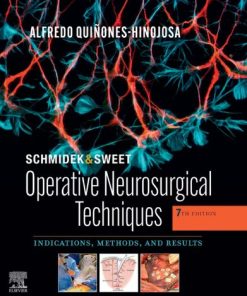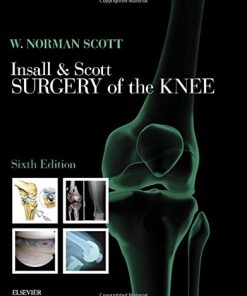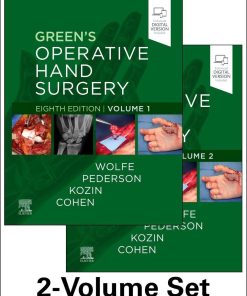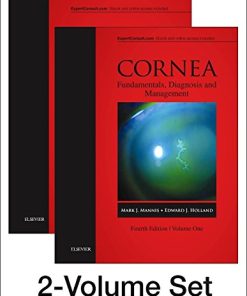(Ebook PDF) Cornea 2 Volume Set 5th Edition by Mark Mannis, Edward Holland 0323711421 9780323711425 full chapters
$50.00 Original price was: $50.00.$25.00Current price is: $25.00.
Cornea, 2-Volume Set 5th Edition by Mark J Mannis; Edward J. Holland – Ebook PDF Instant Download/DeliveryISBN: 0323711421, 9780323711425
Full download Cornea, 2-Volume Set 5th Edition after payment.
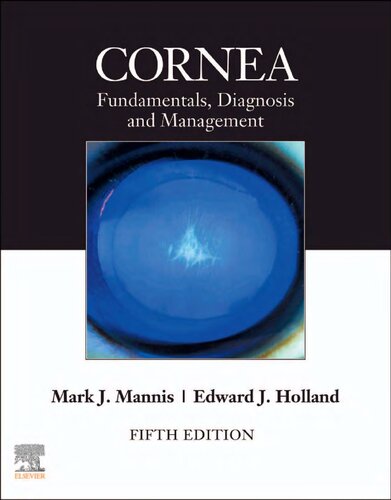
Product details:
ISBN-10 : 0323711421
ISBN-13 : 9780323711425
Author : Mark J Mannis; Edward J. Holland
The only reference available that synthesizes this vast subspecialty into a single trustworthy resource, Cornea, 5th Edition, provides state-of-the-art coverage of the expanding range of contemporary corneal surgery, new diagnostic and imaging technologies, and medical management of corneal and external disease as well as ocular surface disease. Drs. Mark J. Mannis, Edward J. Holland, and a team of more than 200 global experts keep you up to date with both common and more obscure diseases and disorders and the best route to effective treatment and management, making this two-volume text a must-have resource for residents and fellows, general ophthalmologists, and seasoned cornea specialists.
Cornea, 2-Volume Set 5th Table of contents:
PART I. Basic Science: Cornea, Sclera, Ocular Adnexa Anatomy, Physiology, and Pathophysiologic Responses
1. Cornea and Sclera: Anatomy and Physiology
Introduction
Anatomy and Physiology
Development of the Anterior Eye Segment
2. The Conjunctiva: Anatomy and Physiology
Embryology
Anatomy
Histology
Vascular Supply
Lymphatic Drainage
Nerve Supply
Normal Flora
Physiology of the Conjunctiva
3. Tear Film
Macrostructure and Function
Evaluation of the Tear Film
Microstructure
Tear Production
4. Eyelids and the Corneal Surface
Introduction
Anatomy
5. A Matrix of Pathologic Responses in the Cornea
Anatomic Regions of the Cornea
General Pathologic Responses of the Cornea
Specific Pathologic Responses of the Cornea
Pathologic Responses of the Corneal Epithelium
Pathologic Responses of the Subepithelial Zone
Pathologic Responses of the Corneal Stroma
Pathologic Responses of the Corneal Endothelium and Descemet Membrane
The Immune Response: Components and Reactions in the Eye
Soluble Mediators/Receptors of Inflammation
Tissue Components of the Ocular Immune System
Cell-Mediated Immune Response
Humoral (Antibody-Mediated) Immune Response
Anterior Chamber–Associated Immune Deviation
Immune Hypersensitivity Reactions
Examining and Imaging the Cornea and External Eye
SECTION 1. Basic Evaluation of the Cornea and External Eye
6. Examination of the Lids
General Principles
History of the Patient
Dermatologic Examination
Eyelid Position
Tear Meniscus and Puncta
Anterior Eyelid
Posterior Eyelid
Meibomian Gland Expression
Mucocutaneous Junction
Meibomian Gland Imaging
7. Slit Lamp Examination and Photography
Section I: Examination
Section II: Photography
8. Tear Film and Corneal Diagnostic Techniques
Introduction
Dry Eye Questionnaires
General Inspection
Slit Lamp Examination
Tear Stability
Corneal Staining
Tear Production and Volume
Meibomian Gland Health
Tear Clearance Tests
Point-of-Care Tests
Devices Used in the Assessment of Dry Eye Disease
Conclusion
SECTION 2. Laboratory Investigations
9. Practical Ophthalmic Microbiology for the Detection of Corneal Pathogens
Introduction
Communication: Ophthalmologist and Laboratory
Corneal Specimen Collection
Stains and Cytology Specimens
Bacterial Laboratory Diagnosis
Antibiotic Susceptibility Testing
Laboratory Diagnosis of Fungal Infection
Laboratory Detection of Acanthamoeba and Microsporidia
Laboratory Diagnosis of Adenovirus Infection
Laboratory Testing for Herpes Simplex Virus
Laboratory Testing for Varicella-Zoster Virus, Cytomegalovirus, and Epstein-Barr Virus
Laboratory Testing for Chlamydia
Laboratory Diagnosis: Unusual Requests
Summary
10. Molecular Genetics of Corneal Disease
Review of Genetics and Human Disease
Techniques Used to Identify Disease-Causing Genes
Disease-Causing Mutations Versus Non–Disease-Causing Sequence Variations
Epithelial and Subepithelial Corneal Dystrophies
Epithelial-Stromal TGFBI Dystrophies
Stromal Dystrophies
Endothelial Dystrophies
Other Conditions
Conclusion
SECTION 3. Imaging Techniques of the Cornea
11. Keratometry and Topography
Keratometry
Corneal Topography
Topographic Maps
Applications
Conclusion
12. Corneal Shape Analysis and Biomechanical Assessment
Scheimpflug Principle
Three-Dimensional Image—Cornea and Lens Densitometry (Backscatter)
Elevation Maps—Enhanced Elevation
Cone Location
Displaced Apex Syndrome
Enhanced Reference Surface
Comprehensive Corneal Thickness Evaluation
Spatial Variation of Corneal Thickness
Segmental Tomography
Corneal Biomechanical Assessment
Conclusion
13. Specular Microscopy
Optical Principles of Specular Microscopy
Patient Preparation
Standardization of Imaging Techniques
Instrumentation
Qualitative Specular Microscopy
Quantitative Specular Microscopy
Specular Microscopy in Clinical Trials and the Value of a Reading Center
Clinical Applications for Specular Microscopy
Summary
14. Confocal Microscopy
Background
In Vivo Confocal Imaging
Applications
Imaging Corneal Collagen Using Second Harmonic Generated Signals
Normal Human Corneal Stromal Collagen Organization
Collagen Organization in Keratoconus Corneas
Combining in Vivo and Second Harmonic Generated Confocal Imaging
Conclusion
15. Clinical Applications of Confocal Microscopy
Introduction
Normal Exam
Infectious Keratitis
Acanthamoeba Keratitis
Fungal Keratitis
Corneal Dystrophies
Keratoconus
Endothelium Evaluation
Corneal Surgery and Wound Healing
Corneal Disease
Corneal Nerves
Dry Eye
Corneal/Conjunctival Intraepithelial Neoplasia
Systemic Diseases
Conclusion
Declaration of Interests
16. High-Resolution Ultrasound
Ultrasound Biomicroscopy: High-Resolution Ultrasound
Examination Techniques With Ultrasound Biomicroscopy
Use of Ultrasound Biomicroscopy in Disease
Summary
17. Anterior Segment Optical Coherence Tomography
Introduction
Detection and Classification of Keratoconus and Other Corneal Irregularities
Refractive Surgery Evaluation
Corneal Power Measurement and Intraocular Lens Power Calculation
Corneal Opacities
Cornea Transplant
Refractive Implants
Ocular Surface and Iris Tumors
Other Anterior Segment Optical Coherence Tomography Applications
PART III. Differential Diagnosis of Selected Problems in Cornea and External Eye Disease
18. Congenital Corneal Opacities: Diagnosis and Management
Background
History and Physical Examination
Sclerocornea (S TUMPED)
Tears in the Endothelium and Descemet Membrane (S T UMPED)
Corneal Ulcers and Inflammation (ST U MPED)
Metabolic Diseases (STU M PED)
Miscellaneous Syndromes
Posterior Corneal Defects (STUM P ED)
Endothelial Dystrophy (STUMP E D)
Dermoids (STUMPE D)
Corneal Keloids
19. Peripheral Corneal Disease
The Peripheral Cornea: Susceptibility and Response to Disease
Congenital/Developmental/Inherited Disorders of the Peripheral Cornea
Inflammatory/Autoimmune Disorders of the Peripheral Cornea
Neoplastic Disorders of the Peripheral Cornea
Degenerative Disorders of the Peripheral Cornea
Infectious Disorders of the Peripheral Cornea
20. Evaluation of the Corneal Ulcer
History
Clinical Exam
Testing—Corneal Smears and Cultures
Treatment
Conclusion
21. Evaluation of Recurrent Corneal Erosions
Introduction
Presentation
Pathophysiology
Diagnosis
Ancillary Diagnostic Testing
22. Corneal Deposits
Superficial Deposits
Stromal Deposits
Deep Stromal Deposits
23. The Red Eye
History
Identifying Abnormalities in the Ocular Structures
Recognizing Distinctive Ocular Signs
Constructing a Differential Diagnosis
Conclusion
PART IV. Eye Banking
24. Eye Banking: Structure and Function
Eye Banking: Past and Present
Tissue Acquisition
Donor Screening and Authorization
Recovery
Tissue Preservation and Storage
Tissue Evaluation and Suitability
Donor Eligibility
Tissue Processing and Distribution
Facilities, Equipment, Instruments, and Supplies
Quality Assurance
Future Considerations
25. Medical Standards for Eye Banking
Eye Bank Association of America Medical Standards
Federal and State Regulations
Standards Relating to Safety of Tissue
Recalls and Market Withdrawals
Primary Graft Failure
Mechanical and Optical Integrity
Future Challenges and Opportunities
The Ocular Adnexa
SECTION 1. Diseases of the Lid: Anatomic Abnormalities
26. Malposition of the Eyelids
Entropion
Ectropion
Trichiasis and Distichiasis
Floppy Eyelid Syndrome
Giant Fornix Syndrome
Lid Imbrication Syndrome
Lagophthalmos
Eyelid Retraction
SECTION 2. Diseases of the Lid: Tumors, Inflammation, and Infection
27. Benign Lid Tumors
Histology of the Eyelid Skin
Approach to Diagnosis and Management
Benign Tumors of the Epidermis
Benign Tumors of the Dermis
Benign Tumors of the Eyelid Adnexa
Benign Melanocytic Lesions
Conclusion
28. Malignant Eyelid Tumors
Basal Cell Carcinoma
Squamous Cell Carcinoma
Premalignant Lesions
Epidemiology and Differential Diagnosis
Xeroderma Pigmentosum
Muir-Torre Syndrome
Summary
29. Blepharitis: Overview and Classification
Classification
Differential Diagnosis
Management
30. Eyelid Infections
Viral Infections
Bacterial Infections
Fungal Infections
Parasitic Eyelid Infections
SECTION 3. Disorders of Tear Production and the Lacrimal System
31. Dry Eye Overview: Classification and Treatment Algorithm
Definition
Pathophysiology
Classification Scheme
Dry Eye Diagnostic Algorithms and Management Guidelines
Conclusion
32. Aqueous Deficiency Dry Eye Syndrome
Pathophysiology
Sjögren Syndrome Dry Eye
Secondary Lacrimal Gland Deficiencies
Diagnosis
33. Meibomian Gland Dysfunction and Evaporative Dry Eye
Normal Anatomy of the Meibomian Glands
Terminology
Physiology/Pathophysiology
Classification of Meibomian Gland Dysfunction
Diagnosis of Meibomian Gland Dysfunction
Associated Conditions
Animal Models of Meibomian Gland Dysfunction
Lipid Composition and Behavior of Human Meibomian Secretion
Role of Microorganisms
Treatment
Conclusion
34. Dacryoadenitis, Dacryocystitis, and Canaliculitis
Dacryoadenitis
Dacryocystitis
Canaliculitis
35. Epiphora
Introduction
Etiology
Differential Diagnosis
Evaluation
Treatment
Summary
The Conjunctiva
SECTION 1. Conjunctivitis
36. Conjunctivitis: An Overview and Classification
Conjunctival Injection
Conjunctivitis
Acute Conjunctivitis
Chronic Conjunctivitis
37. Bacterial Conjunctivitis
Introduction
Acute Conjunctivitis
Hyperacute Bacterial Conjunctivitis
Chronic Conjunctivitis
Conclusion
38. Viral Conjunctivitis
DNA Viruses
RNA Viruses
39. Chlamydial Infections
Introduction
Biology
Laboratory Tests for Chlamydia
Trachoma
Neonatal Inclusion Conjunctivitis
Adult Inclusion Conjunctivitis
Lymphogranuloma Venereum
Chlamydia Psittaci and Chlamydia Pneumoniae
Conclusion
40. Ophthalmia Neonatorum
Pathogenesis and Assessment of Risk
The Role of Sexually Transmitted Diseases
Causes of Neonatal Conjunctivitis
Laboratory Diagnosis
Treatment
Ocular Prophylaxis
41. Parinaud Oculoglandular Syndrome
History
Directed Work-Up
Individual Etiologies
42. Seasonal and Perennial Allergic Conjunctivitis
Introduction
Clinical Findings
Pathophysiology
Local Treatments
Systemic Treatments
Future Developments
Conclusion
43. Vernal and Atopic Keratoconjunctivitis
Vernal Keratoconjunctivitis
Atopic Keratoconjunctivitis
44. Giant Papillary Conjunctivitis
Symptoms and Signs
Histopathology and Immunopathology
Pathophysiology
Differential Diagnosis
Treatment
Prognosis
45. Mucous Membrane Pemphigoid
Introduction
Epidemiology
Pathogenesis
Diagnosis
Ocular Manifestations
Management of Ocular Mucous Membrane Pemphigoid
Conclusion
46. Erythema Multiforme, Stevens-Johnson Syndrome, and Toxic Epidermal Necrolysis
Introduction
History
Classification
Incidence
Clinical Findings
Recurrent Disease
Differential Diagnosis
Etiology
Pathogenesis
Histopathology
Eye
Management
Conclusion
47. Toxic Conjunctivitis
Introduction
Toxicity Versus Allergy
Toxic Keratoconjunctivitis Related to Topical Medications
Other Causes of Toxic Keratoconjunctivitis
Therapeutic Considerations
48. Superior Limbic Keratoconjunctivitis
Introduction and Epidemiology
Clinical Presentation
Etiology
Histopathology
Treatment Modalities
Differential Diagnosis
Summary
49. Ligneous Conjunctivitis
Epidemiology
Clinical Findings
Pathophysiology/Histopathology
Etiology
Treatment
50. Conjunctivochalasis
Introduction
Epidemiology
Pathophysiology
Clinical Presentation
Diagnosis
Management
Conclusion
SECTION 2. Conjunctival Disease: Tumors
51. Epithelial Tumors of the Conjunctiva
Benign Tumefactions
Malignant Tumefactions
52. Medical and Surgical Management of Ocular Surface Squamous Neoplasia
Initial Considerations
Role of Optical Coherence Tomography in Diagnosis and Management of Ocular Surface Squamous Neoplasia
Choice of Treatment Modality for Ocular Surface Squamous Neoplasia
Medical Management of Ocular Surface Squamous Neoplasia
Surgical Management of Ocular Surface Squamous Neoplasia
Role of Optical Coherence Tomography During Treatment and Surveillance of Ocular Surface Squamous Neoplasia
53. Melanocytic Neoplasms of the Conjunctiva
Introduction
Clinical and Histopathologic Features of Conjunctival Melanocytic Lesions
Management of Conjunctival Melanocytic Lesions
54. Subepithelial Tumors of the Conjunctiva
Congenital Lesions
Reactive, Degenerative, and Inflammatory Lesions
Neoplastic Lesions
Other Subconjunctival Neoplastic Lesions
Diseases of the Cornea
SECTION 1. Developmental Abnormalities of Cornea
55. Developmental Corneal Anomalies of Size and Shape
Absence of the Cornea
Anomalies of Size
Anomalies of Shape
Congenital Anterior Staphyloma and Keratectasia
56. Axenfeld-Rieger Syndrome
Terminology
Axenfeld-Rieger Syndrome
57. Peters Anomaly
Peters Anomaly
SECTION 2. Corneal Manifestations of Systemic Disease and Therapies
58. Corneal Manifestations of Metabolic Diseases
Introduction
Disorders of Carbohydrate Metabolism
Lysosomal Storage Disorders
Disorders of Lipid and Lipoprotein Metabolism
Disorders of Glycosaminoglycan and Lipid Metabolism
Disorders of Amino Acid, Nucleic Acid, and Protein Metabolism
59. Skeletal and Connective Tissue Disorders With Anterior Segment Manifestations
Classification of Skeletal Disorders
Treatment of Ocular and Corneal Abnormalities in Skeletal Disorders
60. Granulomatosis With Polyangiitis and Other Systemic Inflammatory Diseases
Granulomatosis With Polyangiitis
Inflammatory Bowel Disease
Whipple Disease
Chronic Granulomatous Disease
Kawasaki Disease
61. Nutritional Disorders
Metabolism of Vitamin A
Historical Considerations
Classification and Clinical Manifestations of Xerophthalmia
Interactions With Other Factors
Epidemiology
Treatment
Other Nutritional Deficiencies
Summary
62. Hematologic Diseases and Malignancies
Basics of Hematology
Anemia
Leukemia
Bruton Agammaglobulinemia
Plasma Cell Disorders
Differential Diagnosis of the Crystalline Keratopathies
63. Endocrine Disease and the Cornea
Diabetes Mellitus
Parathyroid Disease
Thyroid Disease
Multiple Endocrine Neoplasia
64. Dermatologic Disorders and the Cornea
Inflammatory and Papulosquamous Disorders
Immunobullous Disorders
Genetic Disorders
Miscellaneous Disorders
Summary
65. Infectious Disease: Ocular Manifestations
Emerging Infections
Established Infections
66. Corneal and External Ocular Infections in Acquired Immunodeficiency Syndrome
Viral Infections
Other Viruses
Summary
67. Ocular Graft-Versus-Host Disease
Introduction
Pathophysiology of Acute and Chronic Graft-Versus-Host Disease
Ocular Graft-Versus-Host Disease
Conjunctival Disease
Keratoconjunctivitis Sicca/Dry Eye Syndrome
Management of Ocular Graft-Versus-Host Disease
68. Corneal Manifestations of Local and Systemic Therapies
Topical Ophthalmic Medications
Surgical Solutions
Systemic Therapies
Conclusion
SECTION 3. Corneal Dystrophies, Ectatic Disorders, and Degenerations
69. Corneal Dystrophy Classification
History
Corneal Dystrophy Definition
Corneal Dystrophy Classification in the Literature
Shortcomings of Corneal Dystrophy Nomenclature and Classification
The Impact of Genotyping on Corneal Dystrophy Nomenclature
The International Committee for Classification of Corneal Dystrophies
The IC3D Classification—an Anatomically Based Classification System
The IC3D Category System to Denote the Evolution of a Corneal Dystrophy
The IC3D Templates
Changes from 2008 to 2015 IC3D
Summary
70. Anterior Corneal Dystrophies
Epithelial Corneal Dystrophies
Epithelial Basement Membrane Dystrophy (IC3D, EBMD, Some Category 1)
Corneal Dystrophies of Bowman Layer
71. The Stromal Dystrophies
Granular Corneal Dystrophy
Lattice Corneal Dystrophy
Macular Corneal Dystrophy
Schnyder Corneal Dystrophy
Fleck Corneal Dystrophy
Central Cloudy Dystrophy of François
Posterior Amorphous Corneal Dystrophy
Congenital Stromal Corneal Dystrophy
Pre-Descemet Corneal Dystrophy
72. Descemet Membrane and Endothelial Dystrophies
Posterior Polymorphous Corneal Dystrophy
Fuchs Endothelial Corneal Dystrophy
Congenital Hereditary Endothelial Dystrophy
X-Linked Endothelial Corneal Dystrophy
73. Noninflammatory Ectatic Disorders
Keratoconus
Pellucid Marginal Degeneration
Keratoglobus
Posterior Keratoconus
74. Iridocorneal Endothelial Syndrome
History and Background
Clinical Features
Etiology
Clinical Course
Differential Diagnosis
Management
Summary
75. Corneal and Conjunctival Degenerations
Corneal Degenerations
Conjunctival Degenerations
SECTION 4. Corneal Infections
76. Bacterial Keratitis
Introduction
Epidemiology
Host Defense and Risk Factors
Pathogenesis
Natural History
Presentation
Differential Diagnosis
Clinical Examination
Specific Bacterial Ulcers
Laboratory Investigation
Other Diagnostic Tools
Specific Therapeutic Agents and Resistance Patterns
Strategies for Initial Management
Modification of Therapy
Therapy for Complicated Cases
Surgical Management
Prevention and Early Detection
Counseling and Referral
People also search for Cornea, 2-Volume Set 5th:
cornea 2 volume set
cornea 2 volume set 5th edition
cornea 2-volume set 5th edition pdf
cornea 2-volume set
cornea 2-volume set 5th edition
Tags:
Cornea,2 Volume,Mark Mannis,Edward Holland
You may also like…
Uncategorized
Principles and Practice of Sleep Medicine – 2 Volume Set 7th Edition Meir H. Kryger Md. Frcpc
Medicine - Anesthesiology and Intensive Care
Miller’s Anesthesia, 2-Volume Set: Volume I + II 9th Edition Michael A. Gropper Md Phd (Editor)
Medicine - Surgery
Medicine & Health Science
Auerbachu2019s Wilderness Medicine, 2-Volume Set 7th Edition
Medicine


